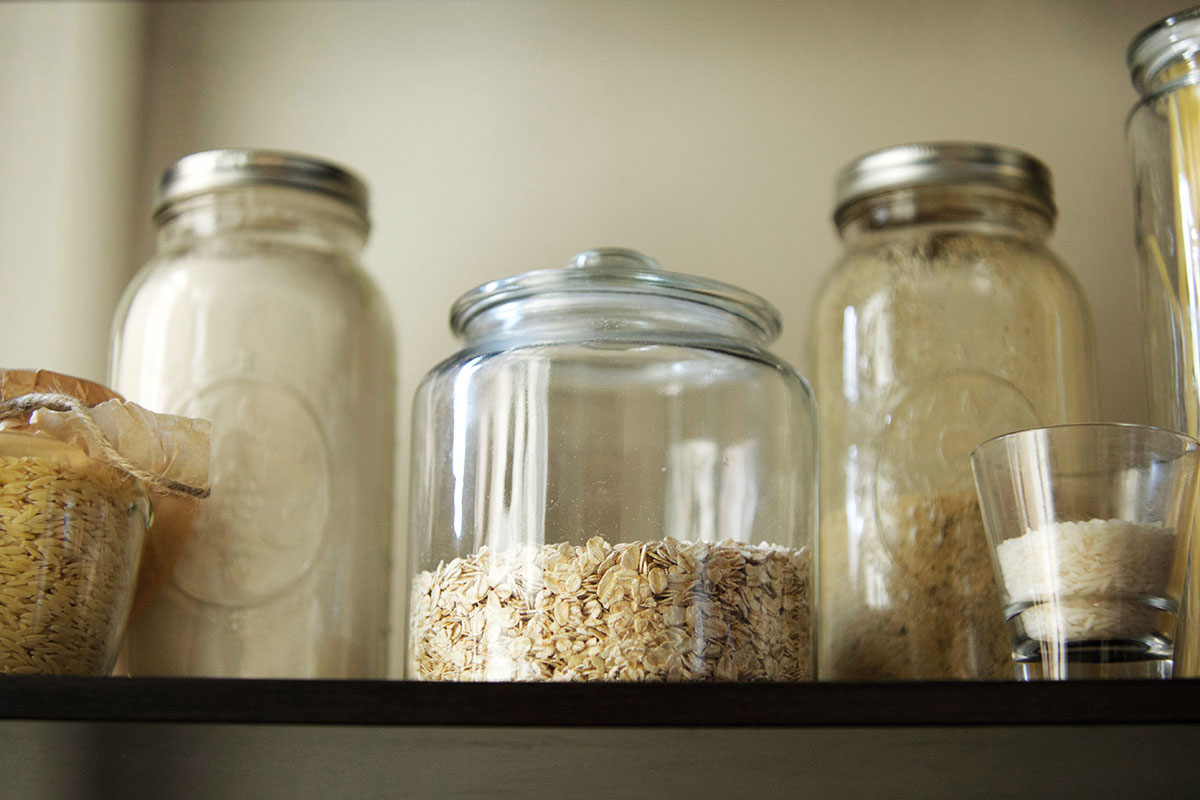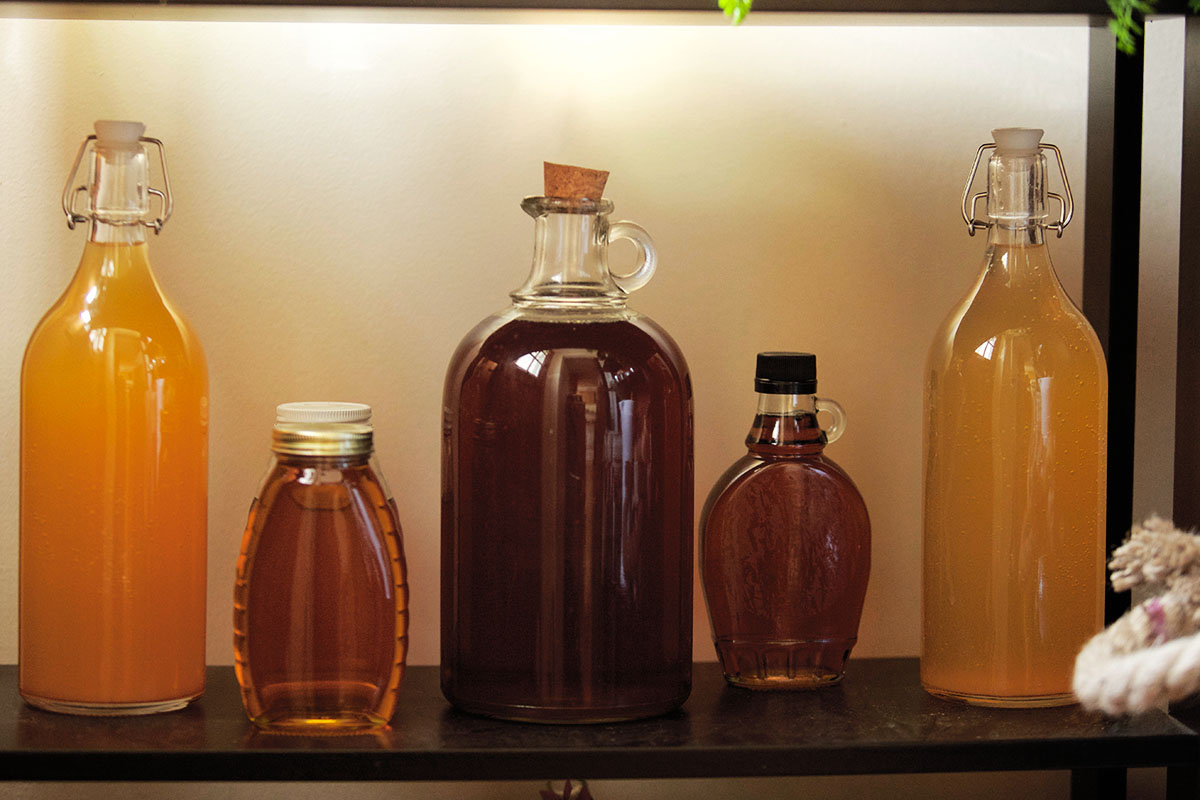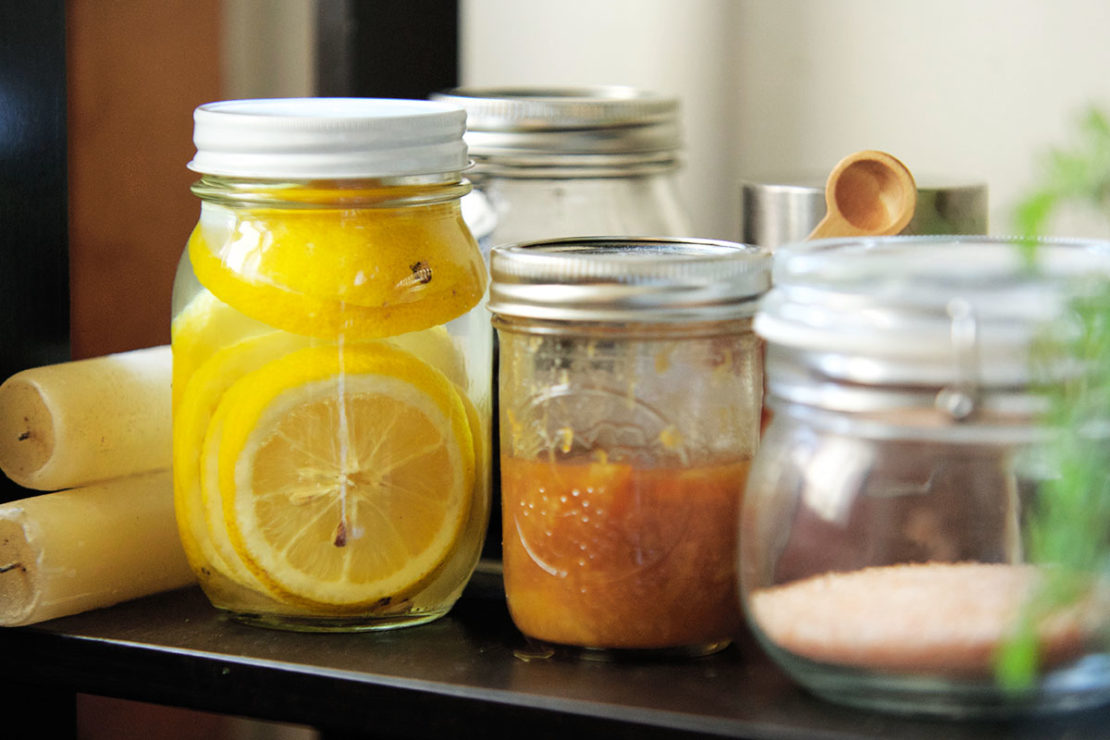
How To Stock A Vegan Pantry
Just over a year ago, after watching a few documentaries, my partner approached me and suggested we embrace a plant-based lifestyle. The more we weighed the health benefits, ethical implications, and environmental impacts of choosing to eat only plants, the more we were convinced that a vegan diet was a sustainable option for us.
The first step in our transition towards eating plant-based foods was to fully stock a vegan pantry as we knew that we could not rely only on pastas, breads, and cereals to gain a full nutrient-rich diet—a mistake many new vegans make.
Plant-Based Home Cooking
Cooking with only plant-based foods is not as difficult as it seems—it simply takes some time to learn new techniques and embrace a new world full of flavors. However, in order to explore new eating habits, it is essential to have ingredients on hand in order to avoid those desperate “there is nothing to eat!” moments. While adjusting takes some time and learning, a plant-based diet becomes more than just a change in what’s on your plate—it becomes a lifestyle.
If you are interested in exploring the vegan life, there are some essentials you will require for your vegan pantry. Once you have these basics, a quick run to the local produce mart will have you ready to cook up a storm. Eating a plant-based diet can be quite cost-effective, especially if you buy in bulk and cook at home. So stock up on those cans of chickpeas and bulk spices!
Whether you are new to a full-on plant-based lifestyle or you want to slowly integrate more vegan whole foods into your diet, these are the pantry necessities which will go a long way in sustaining your new habit. The following is a list of some of the necessities we always have stocked in our cupboards and while it is not exhaustive, I find these are the items we use most frequently.
Vegan Pantry Basics: From Cans and Dried Goods to Vinegars and Wines
There are few things that beat the feeling of creating a delicious meal from what you have on hand at home. Whether your pantry is fully stocked and you choose to draw on a recipe for inspiration, or you have little available and you concoct something from nothing—the act of creativity involved in cooking is a special process all its own.
When it comes to stocking your pantry, there are many options, however, here we will begin with a list of the canned and other dried goods that we keep on hand in our cupboards.
Grains
One of the things I have learned as a veggie eater is that to truly create a delicious dish, it is important to construct layered meals. For example, you might choose to create a Buddha bowl with massaged kale and rice as the base followed by some roasted sweet potato and chickpeas topped with hummus! Rice and other grains, such as quinoa, are perfect for these types of meals, which become as commonplace as sandwiches when you’re vegan.
Canned Goods
Since the beginning of our vegan adventure, I do not think a week has gone by where we haven’t had some kind of bean or legume in our pantry or in our bellies. Beans and legumes are the foundation of many a great vegan meal and an essential in any plant-based pantry. Curries, salads, roasted vegetable combinations, hummus and other bean dips, burritos, and falafel all begin with a base of beans of some kind, not to mention that they are an excellent source of protein. Be certain to keep at least a few cans of chickpeas, black beans, cannellini, and kidney beans on hand in your vegan pantry. I have recently been experimenting with canned lentils, which can also be a great addition to the top of a salad. (Note that while we prefer to purchase canned goods for the sheer convenience, you can also buy dried bulk goods such as chickpeas, beans, lentils, and split peas to cook in big batches and freeze for use when needed, saving money in the process!)
Canned tomatoes are another go-to ingredient in our house. They form the basis of an amazing spaghetti sauce with added chickpeas and veggies, or they can be added to a curry to bulk it up and provide some flavor. We tend to keep a variety of diced, pureed, and chopped tomatoes in our vegan pantry. Regardless of what you choose to use them for I would recommend stocking up at the grocery store when they are on sale!
Coconut milk is integral to a plant-based diet, and is a staple in the vegan pantry. When we began our journey, we heavily relied on curries because you can basically put any kind of veggie into the dish with some spices and coconut milk, and you have yourself a well-rounded meal. Now that we are beginning to explore a little more, we have since used coconut milk as an alternative to whipped cream, and I continue to perfect a homemade vegan coconut yogurt. The possibilities are literally endless with this ingredient, and it provides high-fat content for those who are trying to maintain or put on weight. Vegetable broth is also a necessity in the vegan pantry. You may choose to make your own using leftover veggie discards, or purchase it at the supermarket.
Nuts & Seeds
In addition to grains, you’ll want to gather some nuts and seeds to keep in your vegan pantry. I tend to keep sesame, sunflower, flax, and chia seeds available in addition to hemp hearts, while my partner prefers nuts such as almonds, walnuts, and peanuts for snacking. Seeds are particularly yummy on salads while nuts are good on top of vegan yogurt or simply on their own. Flax seed mixed with water can also act as a binding agent, taking the place of eggs in baked goods. Nuts can also be used to make nut milks such as almond and cashew milk.
Oils, Vinegars, And Wines
Up next in the vegan pantry is a variety of oils. Oils form the foundation of many plant-based meals; however, there are those who choose to not use any oil at all. We have not ventured to that point yet so we always have a selection of canola oil (which we don’t use regularly because it is often genetically modified), organic coconut oil, and organic olive oil. We sometimes have sesame oil in the pantry as well when we want that savory nutty flavor to incorporate into a stir-fry. In addition to oils, vinegars are important as they can be used for salad dressings, gravies, and other types of sauces which will amp up the flavor profile of your dishes. You can even make your own herbal vinegars to incorporate not only a splash of zesty vinegar but also the vibrant flavor and benefits of herbs! We tend to carry balsamic vinegar, apple cider vinegar, and red wine vinegar on a regular basis. We do not use vinegar as frequently as the other ingredients mentioned, but they are staples nonetheless. It is also helpful to have a good white or red cooking wine in the refrigerator for sauces as well.
(Shout out to Isa Chandra Moskowitz and Terry Hope Romero’s, Veganomicon: The Ultimate Vegan Cookbook—the cookbook we used to guide the initial process of stocking our vegan pantry and compiling this list!)
Vegan Pantry Basics: The Spice Drawer
I have a whole section in my kitchen dedicated to herbs and spices. Going to the bulk store, purchasing colorful and flavorful herbs and spices, and putting them in mason jars for storage has become a ritual in our household. Because the key to sustaining an interesting vegan diet is to be creative about the food you prepare, it is important to embrace the spice! Having an arsenal of herbs and spices at the ready will be the difference between cooking interesting meals at home or relying on pre-made meat alternatives, carbohydrates, or ordering take out.
I love to keep fresh herbs in my kitchen garden; however, sometimes recipes call for dried herbs, and as much as I love plants, the dried options tend to be more accessible and long-lasting. Classic herbs such as basil, oregano, rosemary, and thyme are definite must-haves in the pantry. I have come to appreciate the heady, licorice flavor of tarragon as it lends a density to stews and soups. Mint and dill lighten a dish by providing a fresh, summery flavor.
Additionally, now that I have to fine tune my curry making abilities, we always have the ingredients available to concoct a quick spice blend. Cayenne, cumin, cinnamon, ground coriander, garam masala, turmeric, smoked paprika, salt, and pepper form the basis of many a curry. There is something so satisfying about witnessing the colorful powders blend together in a pinch pot. You might want to get started with these 5 herbal spice blends to make and use!
Last, but certainly not least, nutritional yeast (or nooch as we vegans call it) is a mainstay in our spice drawer. A variety of yeast unlike brewer’s yeast, nooch, replicates the ‘umami’ flavor of cheeses and mushrooms. If you think you’re missing that creamy, rich flavor of cheese, nutritional yeast can help with that. There are all kinds of recipes for cheese sauces and seasonings made with nooch. Sometimes I simply sprinkle some on top of my soup or chili for an added cheesy flavor. The savory taste of nooch is hard to describe, but once you try it, I guarantee you won’t go back.
While I was somewhat daunted by a vegan pantry list like this when we first began our journey, it became an enjoyable adventure which I learned to embrace. We took things one at a time and eventually got into the groove of cooking regularly at home and building our pantry with each shopping trip.
Some Vegan Recipe Ideas
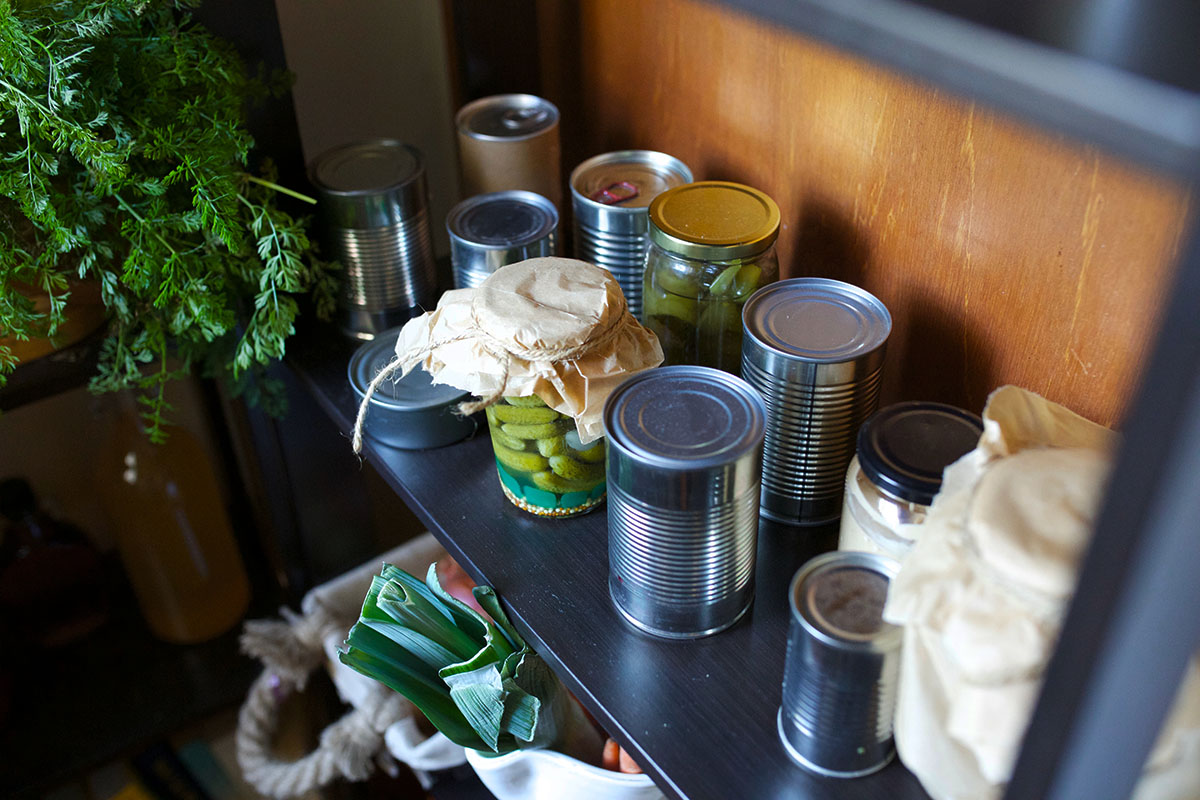
Once your pantry is stocked, you’ll want some ideas and inspiration to get you started! Here are some of favorite vegan recipes from the Herbal Academy:
Soups
Farmstand Minestrone and Pesto Crostini
Salads
Arugula, Peach, Radish, and Corn Salad
Strawberry, Avocado, and Hemp Seed Kale Salad
Entrees
Stuffed Sweet Potatoes and Cashew Queso
Greens and Roots on a bed of warm Quinoa
If you are just beginning a plant-based journey, I would highly recommend investing in a few vegan cookbooks such as the aforementioned Veganomicon or Angela Liddon’s Oh She Glows Everyday for easy and accessible recipes and a more thorough breakdown of what to stock in your pantry. Once you are equipped with the correct tools, cooking can be a gratifying creative process which breathes new life into food. Enjoy the process!
And a Cookbook!
As luck would have it, a vegan cookbook landed in the Herbal Academy mailbox just before this blog post went live. We love the cookbooks mentioned above and yet always appreciate new inspiration to re-energize our enthusiasm for meal planning, cooking, and eating! Spork-Fed by sisters Jenny Engel and Heather Goldberg is a fun little vegan cookbook with recipes ranging from the staples (make your own tofu and seitan!) to delicious entrees (butternut squash and sage lasagna) to sweet endings (chocolate mint truffles and green tea cookies), and does include some interesting tidbits on how various herbs and other ingredients are beneficial for wellness.
How do you incorporate plants into your diet? Fill us in on your vegan pantry staple items by sharing with us on our social media pages.
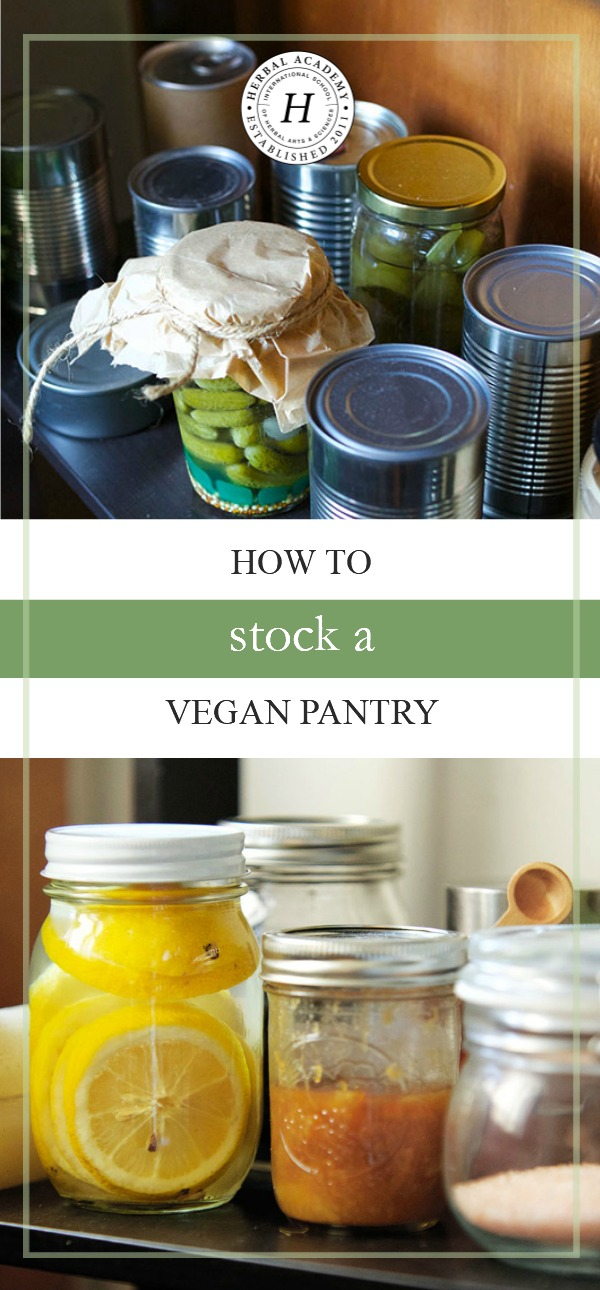
REFERENCES
Moskowitz, I. C., & Romero, T. H. (2007). Veganomicon: The ultimate vegan cookbook – 10th Anniversary Edition. New York, NY: Marlow & Company.

